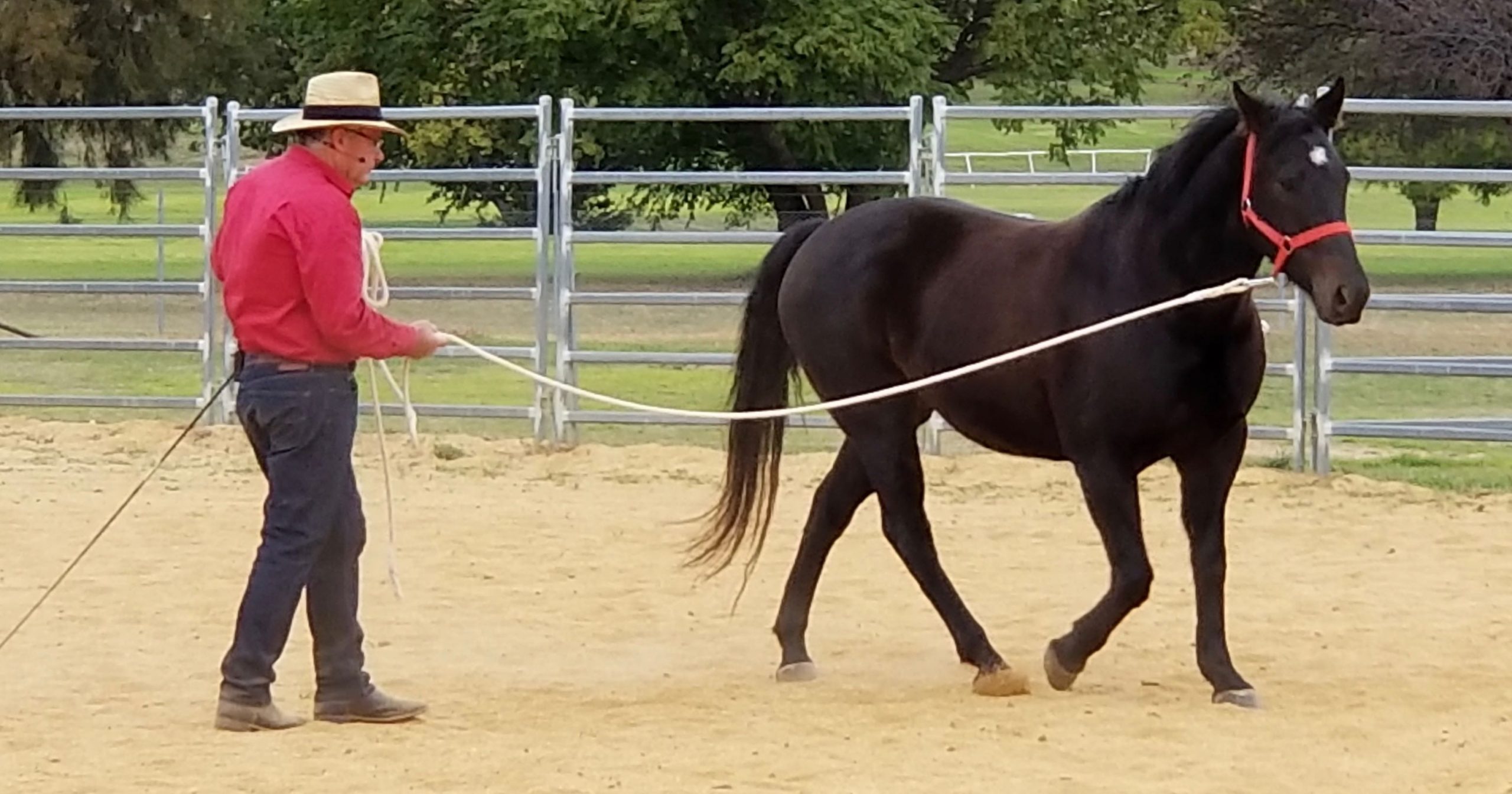A lady bought a horse to one of my clinics and said, ‘I’m having trouble with flying changes.
Can you teach him to change leads for me.
I’m doing dressage and I need flying changes.’
There are many steps that lead to a correct flying change.
Your horse must be able to walk, trot and canter correctly.
He must be taught to move in the exact circle with the exact bend you ask.
He must be able to move smoothly and correctly from trot to canter and walk to canter and through each downward transition.
If any step isn’t properly established, there’ll be a problem with flying changes.
Sure, you can hop on a horse and rush him around in a fast canter and use your weight and timing so that he changes legs, but this won’t help you to establish a correct lead change.
The lady at my clinic hoped to have flying changes ‘installed’ in a couple of easy lessons.
Many people think that flying changes, spins, turns and other movements can be ‘installed’ into a horse.
They believe that once a movement is ‘installed’, it will be there forever.
Nothing could be further from the truth.
Think of horse training in a linear fashion:
Lesson one is when you first catch a foal.
Each lesson thereafter must be a progression from the previous one.
If you attempt to jump from lesson10 to lesson 20, you’ll always have problems later on.
At some stage, you’ll have to go back and teach your horse the lessons that you’ve missed.
It will take much longer to reach your goal and the end result won’t be as good.
My book was written to show how to teach horses in a logical sequence.
Nothing you teach your horse is automatically ‘there’ forever.
If you’re not careful and precise every time you ride, your horse will take shortcuts.
Who can blame him?
Just like you and me, your horse wants to make life as easy as possible for himself.
Take the example of asking your horse to move from trot to canter.
With a few months of consistent training, you can teach your horse to canter on the exact stride you ask, every time you ask.
People then mistakenly think that the trot to canter transition is ‘installed’ for evermore.
However, over time you may become a little slack and occasionally allow your horse to run a few steps before he canters.
You think it doesn’t matter; you think your horse should be allowed to do his ‘own thing’ from time to time.
Beware, this is the beginning of the end.
Inconsistent training is very confusing for any horse.
You have in fact ‘uninstalled’ your trot to canter transition.
Your horse now has two things in his mind.
Does he have to canter exactly when you ask?
Or can he run for a few steps before he canters?
Because of this conflict, your horse will become nervous and worried when he’s asked to canter.
Although you can go back and teach your horse to canter exactly when you ask, you can’t erase his memory.
You can’t remove the memory of running a few steps from your horse’s mind.
One day under pressure (probably at a competition), he’ll run for a few steps before he canters, because it’s in his memory and always will be.
Remember, you can’t ‘install’ movements into your horse and more importantly, you can’t ‘uninstall’ memories either.
It’s always better if bad habits aren’t in your horse’s memory in the first place.

